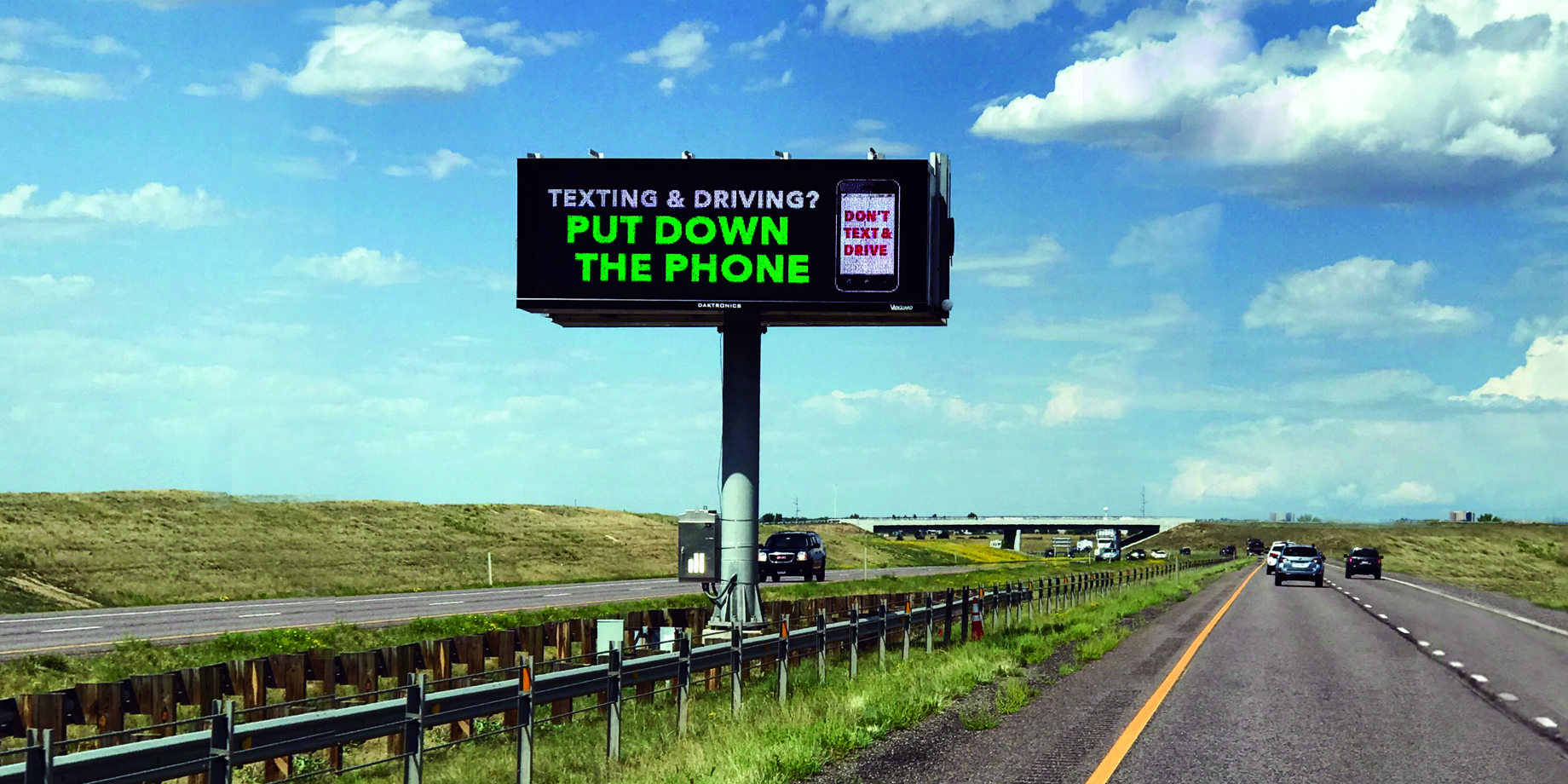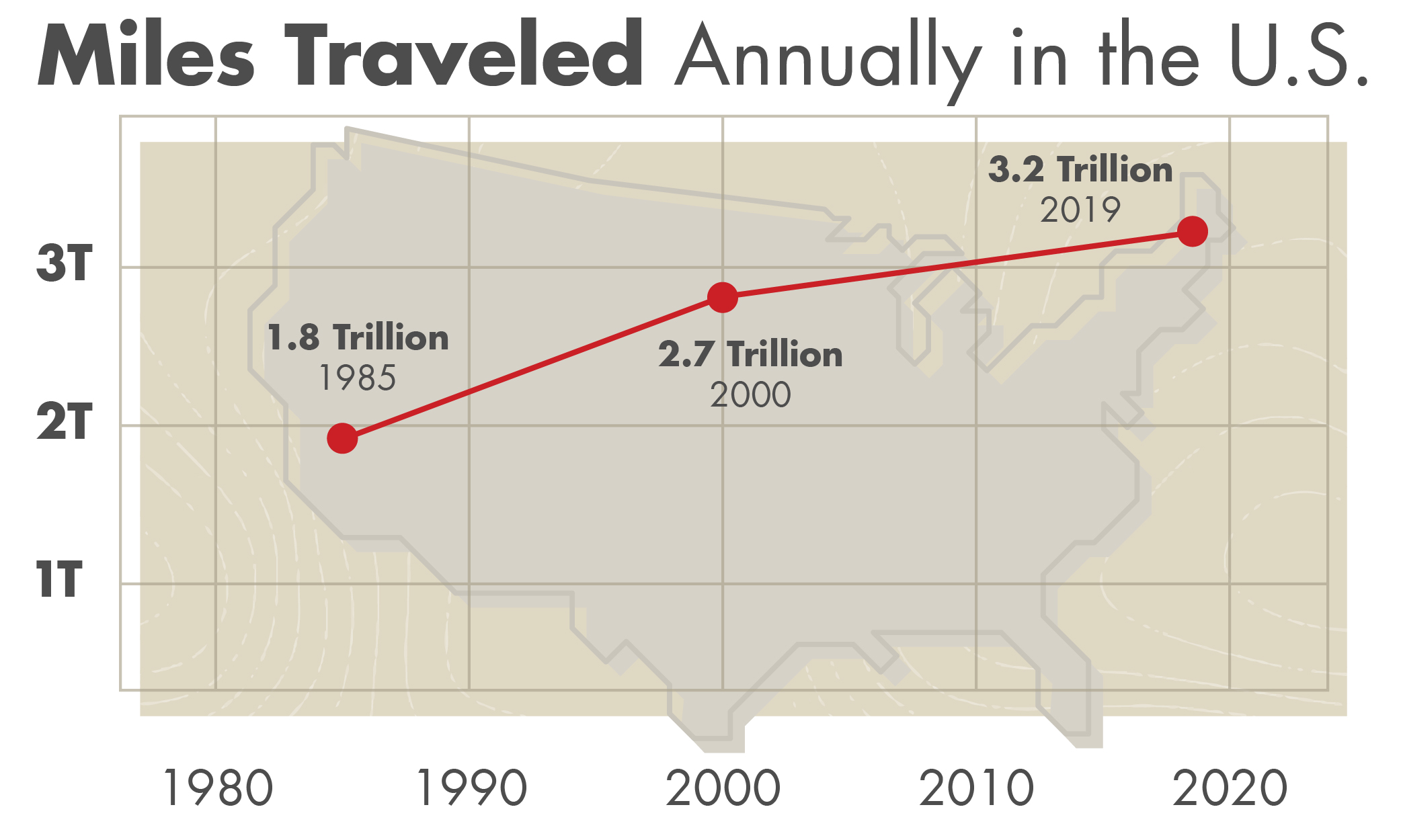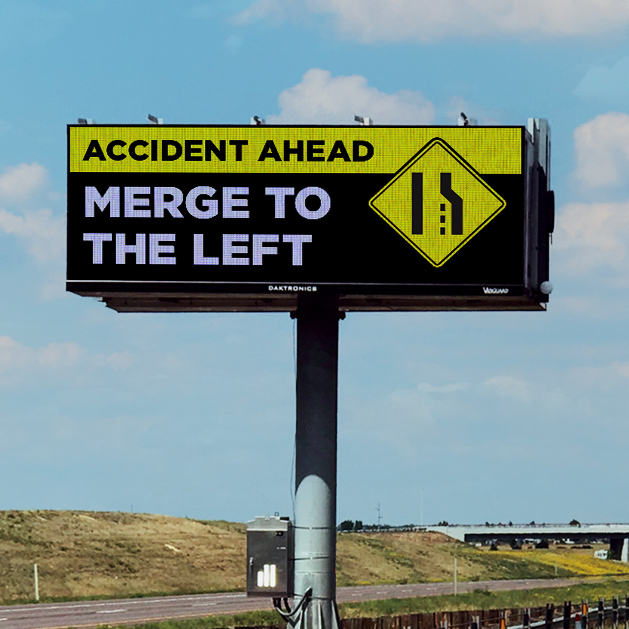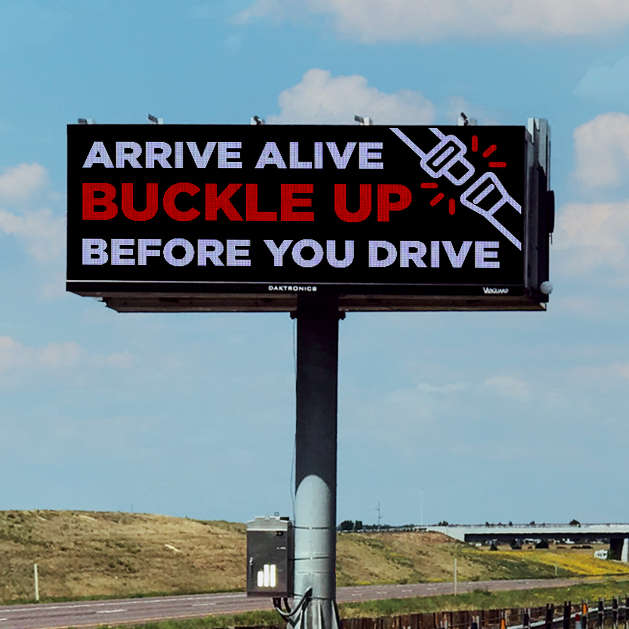Cutting with a Sharper Edge
Technology is changing fast, and so are consumer expectations. From smart TVs, phones and tablets, people are used to getting information instantly and in high resolution. Even vehicles are using smart LED technology to help drivers navigate everything from roads to radios.
9/22/2021
Categories: Transportation

It’s important for transportation professionals to keep up so they can provide effective communication to keep people informed and safe. When you provide information in a format people expect, they’re more likely to pay attention.
The old, amber digits simply don’t catch drivers’ eyes anymore. Let’s face it – they look old fashioned and outdated, so they’re easy to dismiss. If your delivery method isn’t up to date, people may think your information isn’t either. That means important safety information may not be seen by the very people who would benefit from it. The number of people it can affect is growing at a very fast pace.

Quality message. Quality time.
Even though traffic has increased by 78%, spending on infrastructure operation and maintenance rose by only 9.5 percent between 2007 and 2017, while real spending on capital projects dropped by 16%m according to the Brookings Institution.ǂ
Adapting to this situation requires innovation on many levels, including effective communication that gets through to motorists quickly and effectively. Agencies need to be able to adapt to technology trends and publish relevant, easy-to-understand content on their digital messaging systems (DMS).
DMS with higher resolutions can show more information in less time than traditional text-only DMS, in a way that people expect. The sharper visual technology presents universally recognized MUTCD graphics to replace three or four frames of text, making better use of limited viewing time with a clearer, more concise message.
After all, ITS professionals always want to ensure that motorists keep their eyes on the road as much as possible. It’s crucial that important information is conveyed efficiently.

Visible innovation.
A high resolution, full-color DMS provides traffic professionals with flexibility and versatility, so you can decide the best way to present your messages – whether it’s through images, words or a combination. Graphics will be recognizable and can even mimic standard roadway signs.
Connected to real-time data sources, these displays can show travel times, congestion warnings, weather conditions and other situational messages that help drivers make informed decisions on the way to their destinations.
Showing this valuable information in a vibrant format adds to its effectiveness. With a higher resolution, an integrated DMS adds quality to a message which, in turn, adds value to the roadway.

Valuable clarity.
The ability to show visual information makes high-resolution DMS a versatile solution for a wide variety of roadway environments.
In April 2019, the U.S. Department of Justice updated its best practices for transportation agencies to make AMBERTM Alerts more effective.+ This includes the finding that time is critical in finding missing children. A DMS is ideal for getting accurate information out quickly. Content can include text, which is certainly important, but adding a photo of the missing child can increase the chances of spotting him or her.
You can include key information such as license plates and the desired call to action, such as calling 911.

It’s so simple.
High-resolution LED display technology certainly isn’t new, and motorists have come to expect the fast viewing, easy-to-read content these displays provide. With today’s manufacturer support, best practices and industry standards, DMS are more practical and effective than ever.
As the most visible part of ITS systems, dynamic message signs are expected to be functionally sound and effective. They reflect the agency’s devotion to innovation and to making highway transportation better for everyone. That should be enough to convince any forward-thinking ITS professional to choose current technology as their DMS projects stay in sync with personal technology.

*Federal Highway Administration monthly Traffic Volume Trends reports
ǂShifting into an era of repair: US infrastructure spending trends. Kane, Joseph W. and Tomer, Adie. Friday, May 10, 2019. https://www.brookings.edu/research/shifting-into-an-era-of-repair-us-infrastructure-spending-trends/.
+AMBER Alert Best Practices Guide, Second Edition. USDOJ. April 2019https://ojjdp.ojp.gov/library/publications/amber-alert-best-practices-guide-second-edition
